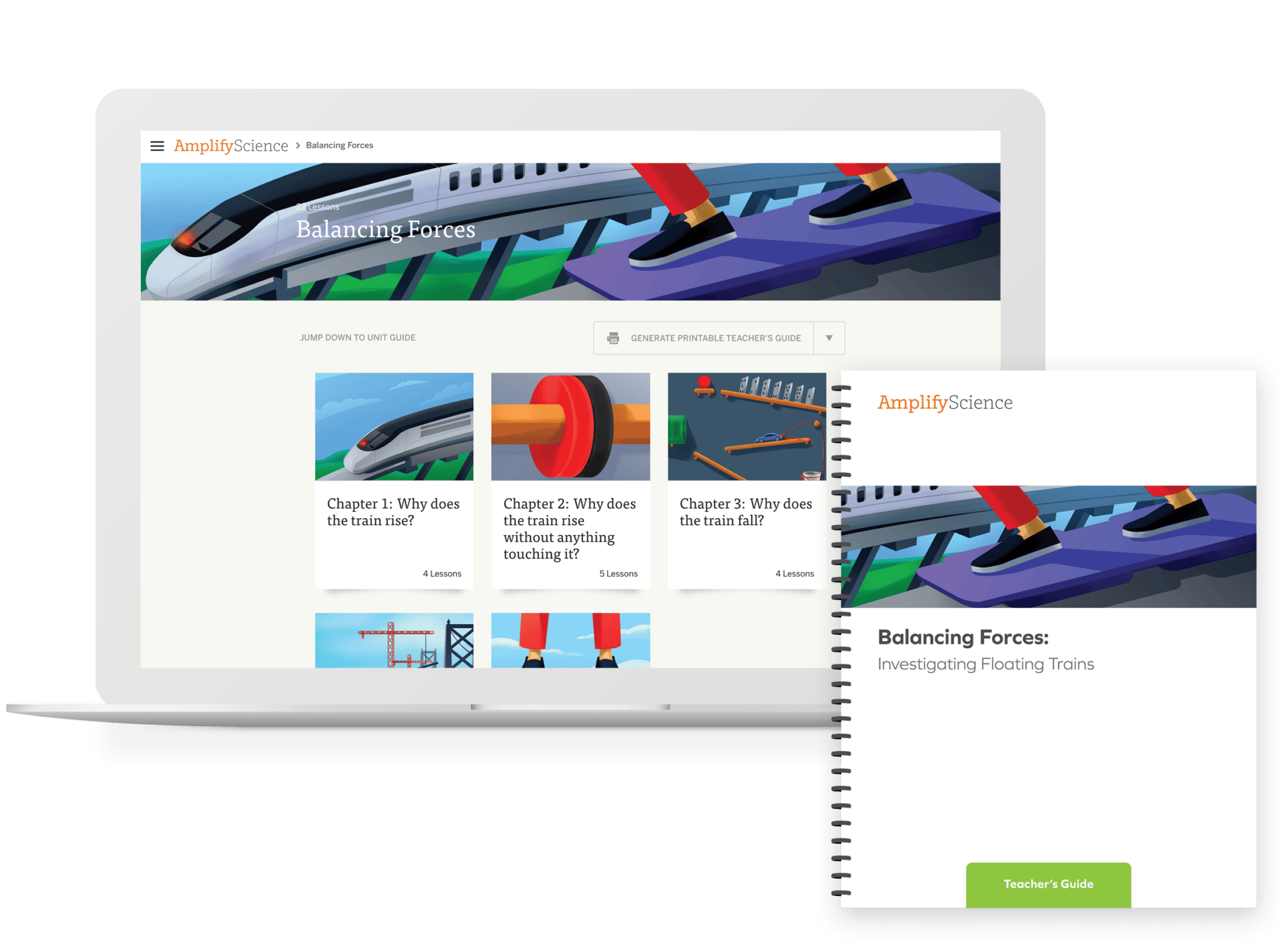See what an interactive 21st-century science curriculum looks like.
In ĆØßäAV Science, students take on the role of a scientist or engineer to actively investigate compelling phenomena through engaging hands-on activities, immersive digital simulations, comprehensive reading and writing activities, and lively classroom discussions.
This video library will give you a sense of what ĆØßäAV Science looks like in the classroom.

Immersive experiences
Watch how ĆØßäAV Science integrates hands-on learning and digital modeling tools to support three-dimensional (3D) learning in elementary and middle school.
Inspiring curiosity with hands-on investigations
Grades K-5: As part of ĆØßäAV Scienceā€™s Animal and Plant Relationships unit, students take on the role of plant scientists. In this video, second-grade students from Chicago Public Schools are engaging with a hands-on model in which they simulate animal dispersal of seeds, measure how many seeds were dispersed to places where the seeds are likely to grow, and analyze their results.
Grades 6-8: As part of ĆØßäAV Scienceā€™s Populations and Resources unit, students take on the role of ecologists. In this video, sixth-grade students from Denver Public Schools are conducting a hands-on investigation involving yeast to test the effects of the availability of food on the size of a population.
Collecting evidence with simulations and modeling tools
Grades K-5: As part of ĆØßäAV Scienceā€™s Earthā€™s Features unit, students take on the role of geologists. In this video, fourth-grade students from Chicago Public Schools are using digital modeling tools to investigate how fossils and rocks can be used to make inferences about past environments.
Grades 6-8: As part of ĆØßäAV Scienceā€™s Chemical Reactions unit, students take on the role of chemists. In this video, seventh-grade students from Chicago Public Schools are using a digital simulation to find and observe substances that do and do not react when mixed together.
Literacy connections
Watch how ĆØßäAV Science integrates literacy and discourse to support three-dimensional (3D) learning in elementary and middle school.
Making cross-curricular connections with literacy
Grades K-5: As part of ĆØßäAV Scienceā€™s Animal and Plant Relationships unit, students take on the role of plant scientists. In this video, second-grade students from Chicago Public Schools use Student Books to gather information, practice reading skills, and respond to writing prompts to construct evidence-based arguments.
Grades 6-8: As part of ĆØßäAV Scienceā€™s Matter and Energy in Ecosystems unit, students take on the role of ecologists. In this video, sixth-grade students from Denver Public Schools are reading science articles, then responding to writing prompts to create arguments using evidence.
Talking like scientists
Grades K-5: As part of ĆØßäAV Scienceā€™s Weather and Climate unit, students take on the role of meteorologist. In this video, third-grade students from Chicago Public Schools are discussing the data they collected, as well as which Science and Engineering Practices they used during the lesson.
Grades 6-8: As part of ĆØßäAV Scienceā€™s Matter and Energy in Ecosystems unit, students take on the role of ecologists. In this video, sixth-grade students from Denver Public Schools are using evidence to support their claims as part of a classroom discussion.
Hear from teachers.
Hear from teachers, administrators, and students across the country who are using ĆØßäAV Science in their classrooms right now.
A week in the life
Grades K-5: We asked Keniesha Charleston, a second-grade teacher from Chicago Public Schools, to talk through an example of what one week of using ĆØßäAV Science is like in her classroom.
Grades 6-8: We asked Amy Trujillo, a sixth-grade teacher from Denver Public Schools, to talk through an example of what one week of using ĆØßäAV Science is like in her classroom.
From the classroom
Access a free sample!
Ready to take a closer look at ĆØßäAV Science? No problem. Just complete the form for instant digital access to two sample units.

